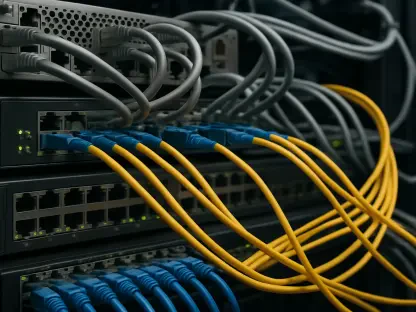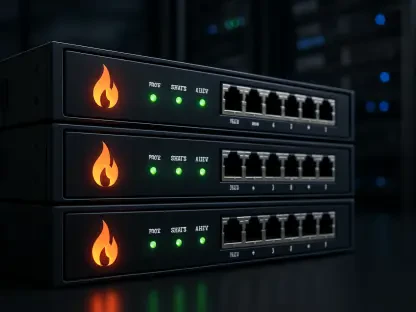In an era where technology weaves through every facet of daily life, the United States finds itself at a critical juncture concerning its reliance on the Global Positioning System (GPS) for positioning, navigation, and timing (PNT). GPS serves as the backbone for essential functions, from guiding military missions to enabling ride-sharing apps on smartphones, yet its susceptibility to disruptions—whether from cyberattacks, natural disasters, or technical failures—poses a significant threat to national security and economic stability. The urgency to develop robust backup systems has never been clearer, but a pressing challenge emerges as proposals for alternative PNT solutions surface. Can these new systems harmonize with the vast network of Internet of Things (IoT) devices that millions of Americans depend on for smart homes, security, and utilities? This tension between advancing PNT resilience and protecting existing technology sets the stage for a complex debate on innovation and coexistence.
The Imperative for GPS Redundancy
The need for dependable alternatives to GPS has become a national priority, driven by the system’s critical role in both public and private sectors. GPS supports everything from precision agriculture to emergency response systems, ensuring that timing and location data remain accurate across industries. However, a single disruption could cascade into chaos, halting financial transactions, grounding flights, or crippling defense operations. Experts agree that building PNT redundancy is not merely a technical endeavor but a safeguard for economic vitality and public safety. The stakes are high, as vulnerabilities in GPS could be exploited by adversaries or exacerbated by unforeseen events like solar flares. Addressing this gap requires immediate action to develop systems that can step in seamlessly when satellite signals falter, ensuring continuity in an increasingly connected world where reliance on precise location data only continues to grow.
Beyond the urgency lies the complexity of implementing such backups without unintended consequences. While the federal government and industry stakeholders push for solutions, the focus remains on creating a framework that can withstand diverse threats. The Department of Transportation (DOT) and other agencies have underscored the importance of resilience, advocating for technologies that complement rather than replace GPS. This effort involves not just innovation but a deep understanding of how disruptions impact critical infrastructure. The potential for economic loss and security breaches drives home the point that redundancy must be comprehensive, covering military, commercial, and civilian needs alike. As discussions evolve, the emphasis is on crafting policies and technologies that prioritize long-term stability over short-term fixes, recognizing that a robust PNT ecosystem is vital for maintaining the nation’s competitive edge in a global landscape.
Concerns Over IoT Disruption
A significant hurdle in the quest for GPS backups emerges with proposals like NextNav’s plan to repurpose the lower 900 MHz spectrum for a high-power terrestrial PNT network. This spectrum currently operates as a shared, unlicensed band under Federal Communications Commission (FCC) rules, hosting countless low-power IoT devices such as smart thermostats, security sensors, and utility meters. The risk of interference from high-power transmissions is substantial, with studies like one from Pericle Communications indicating that up to 60 percent of these devices could experience degraded performance or complete failure. Such disruption would affect millions of households and businesses, undermining trust in connected technologies that have become integral to modern living. The potential for widespread connectivity issues raises alarms about the readiness of this proposal to integrate without causing havoc.
The economic implications of such interference cannot be overstated, as the cost of replacing affected hardware could run into billions of dollars. Beyond financial burdens, the disruption to daily operations—think smart home systems failing or toll-booth readers malfunctioning—would create logistical nightmares for consumers and industries alike. Industry groups, including the Z-Wave Alliance, have voiced strong concerns, pointing out that the lack of real-world data on NextNav’s impact leaves too much to chance. Simulations used to support the proposal often rely on overly optimistic assumptions about device density and usage, failing to account for the noisy, crowded environments where IoT devices typically operate. This gap in evidence fuels skepticism about whether the proposed terrestrial network can truly coexist with existing infrastructure, highlighting the need for a more cautious approach to spectrum reallocation.
Prioritizing Coexistence in Technology Deployment
Coexistence has long been a guiding principle in wireless technology, ensuring that systems like Wi-Fi, Bluetooth, and Z-Wave operate without stepping on each other’s signals. This harmony is essential for maintaining the functionality of the digital ecosystem, yet the introduction of high-power transmissions in the lower 900 MHz band threatens to upend this balance. Critics of NextNav’s proposal argue that without rigorous field testing, there’s no assurance that new PNT systems won’t overwhelm low-power IoT devices. The dense, unpredictable nature of real-world deployments—where countless devices interact in close proximity—differs starkly from controlled simulations. Protecting the integrity of existing technologies must remain a priority, as any new solution should enhance rather than erode the connectivity that underpins modern life.
The push for coexistence extends beyond technical considerations to encompass policy and regulatory frameworks that govern spectrum use. The FCC’s decision to initiate a broad Notice of Inquiry rather than rushing into rulemaking reflects a commitment to thorough evaluation. This cautious stance aligns with industry calls for evidence-based decisions that prevent unintended fallout. Stakeholders emphasize that innovation in PNT must be matched by accountability, ensuring that new systems are tested under realistic conditions before deployment. The goal is to avoid a scenario where the pursuit of GPS redundancy inadvertently creates new vulnerabilities in the IoT landscape. By fostering dialogue between technology developers, regulators, and users, a path can be charted that respects the delicate balance of shared spectrum resources while advancing national interests.
Diversifying Solutions for PNT Resilience
Rather than pinning hopes on a single approach, the DOT has outlined a spectrum of GPS-complementing technologies that could bolster PNT resilience. Options range from low-Earth orbit (LEO) satellite systems to time-over-fiber distribution and terrestrial radio frequency solutions, each offering unique strengths. NextNav’s terrestrial network is merely one contender in a field that includes federally supported trials like the Broadcast Positioning System by the National Association of Broadcasters and UrsaNav’s eLoran system. These alternatives aim to deliver redundancy without displacing current technologies, presenting a more inclusive strategy. A diversified portfolio of solutions mitigates the risk of over-reliance on proprietary systems, ensuring that the nation’s PNT infrastructure remains adaptable to evolving challenges and threats.
Exploring multiple paths also allows for tailored applications that address specific needs, whether in urban centers or remote regions. For instance, satellite-based backups might excel in wide-open areas, while terrestrial systems could prove more reliable in dense environments where signal interference is common. This variety underscores the importance of federal research programs like the DOT’s Complementary PNT initiative, which seeks to evaluate and refine these technologies. By investing in a range of options, the U.S. can avoid the pitfalls of a one-size-fits-all approach that might compromise existing infrastructure. The emphasis on diversity in PNT development reflects a broader understanding that resilience comes from flexibility, enabling the nation to weather disruptions without sacrificing the connectivity that drives progress in countless sectors.
Forging a Path Through Collaboration
The journey toward effective GPS backups demands a spirit of collaboration among government bodies, industry leaders, and technology advocates. Groups like the Z-Wave Alliance have actively engaged with federal initiatives, contributing to the FCC’s inquiries and the DOT’s research efforts to ensure that new PNT systems strengthen rather than weaken connected infrastructure. This partnership approach highlights the need for shared responsibility in addressing both the urgency of redundancy and the protection of IoT ecosystems. Comprehensive field testing stands as a cornerstone of this process, offering concrete data on how proposed solutions perform in real-world scenarios. Only through such diligence can stakeholders build confidence that advancements in PNT will not come at the expense of established technologies.
Reflecting on the efforts made, the groundwork laid by collaborative discussions and federal oversight provides a framework for balancing innovation with caution. The engagement between agencies and industry players fosters an environment where concerns about spectrum interference are thoroughly examined, while the exploration of diverse PNT options opens doors to sustainable solutions. Moving forward, the focus must remain on actionable steps, such as expanding testing protocols and refining policies to support coexistence. By continuing to prioritize evidence over haste, the U.S. can achieve a resilient PNT infrastructure that upholds national security and economic health without disrupting the digital fabric of daily life. The path ahead lies in sustained cooperation, ensuring that every stride toward GPS redundancy also safeguards the technologies Americans have come to rely upon.









